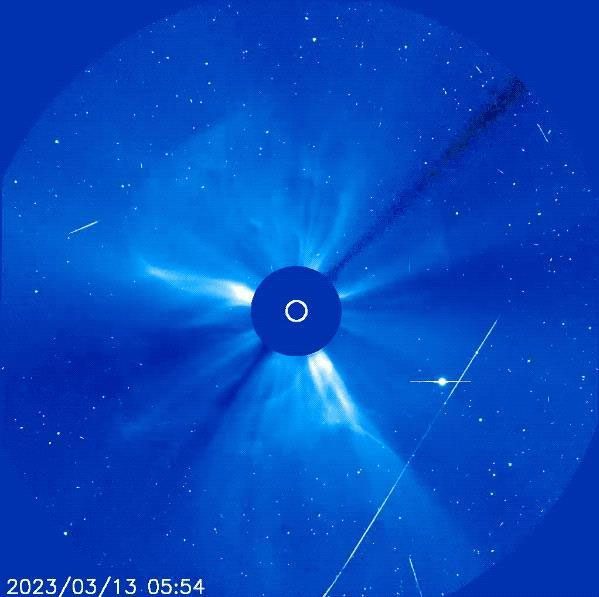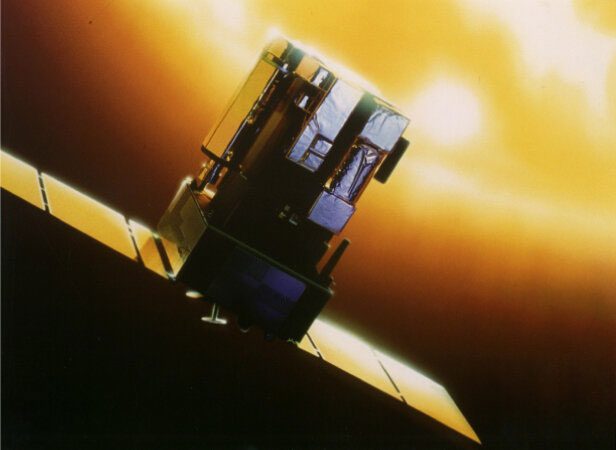The fireball did not shoot towards Earth but in the opposite direction, yet it was so powerful that its shockwaves reached Earth and were identified as the cause of a recent sudden radio blackout.
According to Science Alert, data from March 13 from the Solar and Heliospheric Observatory (SOHO) of the European Space Agency (ESA) and NASA recorded a very powerful coronal mass ejection (CME), appearing as a bright expanding cloud moving at an extremely high speed of 2,127 km/s.
It is not uncommon for the Sun to emit CMEs – a type of cosmic fireball made of plasma – but usually, Earth is only affected when these CMEs are directed straight at it.

CME eruption on March 13 – (Photo: SOHO/NASA/ESA).
This CME was referred to by Space as “dark plasma ball”, because it was shot in the opposite direction of Earth. However, the eruption was so strong that its shockwaves spread throughout space, hitting even in the opposite direction and creating a G2-class geomagnetic storm that struck Earth.
The event is believed to have caused auroras and a shortwave radio signal interruption noted in countries across Europe and America near the Arctic on March 15.
This CME was classified as R, which is very rare, and originated from a sunspot on the far side of the mother star.

SOHO spacecraft – (Photo: ESA)
The potential culprit of this event is AR3234, a sunspot that has been out of view from Earth since March 4, after it emitted 49 C-class flares, 12 M-class flares, and 1 X-class flare (the strongest type), along with multiple CMEs, many of which impacted Earth.
According to NASA, their other solar probe, Parker Solar Probe, will be in the line of sight of sunspot AR3234 on March 17, providing an opportunity to gather more detailed data about this fierce cosmic cannon. It will take some time for the data collected on March 17 to be transmitted back to Earth and analyzed.
The Solar Dynamics Observatory (SDO) of NASA and the Solar Orbiter from the European Southern Observatory (ESO) will also join SOHO and Parker in this study.





















































